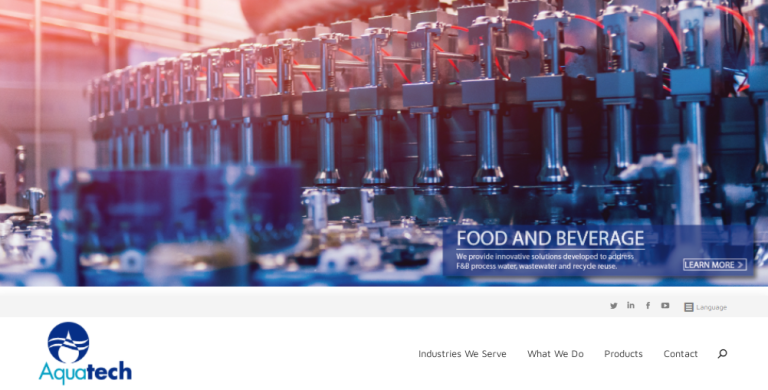Biofouling causes gazillion dollars of damage to public and industrial water infrastructure, resultantly impeding the overall efficiency, productivity, and structural integrity of membrane-based systems. It is a process in which an accumulation of tiny creatures living inside the water will attach themselves to the hull of a passing vessel. And these organisms gradually eat up your ship and cause you a lot of money. This blog will help you understand the concept behind biofouling and how it is caused, and its prevention techniques.
What Is Biofouling?
Biofouling is also called biological fouling. It is the aggregation of microorganisms, plants, algae, or small animals underwater or on wet surfaces. The buildup of these species causes structural or other functional damages.
Biofouling is further divided into two categories—microfouling and macrofouling. Microfouling refers to the formation of bacterial film that sticks to the surface. On the other hand, macrofouling refers to the buildup of organisms in multiple layers. These organisms could be soft corals, barnacles, and seaweed. Your surface could be threatened by either one of them. The degree to which it is contaminated is measured by a few different factors such as temperature, pollution, and geographical location.
Temperature decides the growth rate and breeding period of marine animals. It also decides the amount of buildup altogether. Next is pollution because it can reduce and induce biofouling keeping solar radiation into account. Another factor that goes into playing is geographical location. Because it decides the amount of biofuel buildup due to sunlight as it directly affects the photosynthesis process. Geological diversity is also held responsible for diversifying species growth.
Little About Its History
If we talk about its history, biofouling was first spotted during the sail era. People came to realize it when they observed a large number of patches on their vessels during their travel from one place to another. They realized that this was impeding their ship’s speed to a massive amount. But right when the cause was discerned, people began to fix this issue via various methods. Soon, they could move so far and so fast than ever before.
What Problems Does Biofouling Cause?
Biofouling not only impedes the performance of a hull but also damages the hull as it tends to decay gradually. The decomposition rate will be fast if your ship has a wooden hull. Another major problem biofouling cause is the reduced traveling speed of a ship as the hull gets heavy and makes it difficult for the hull to accelerate. It causes many problems when you have to execute frequent traveling from one continent to another. Biofouling makes you arrive late, but it also makes you sometimes starve. Sometimes, we have to use Seawater Reverse Osmosis to reject the dissolved species.
The major problems biofouling causes are an inconvenience, starvation, and thousands of maintenance costs. You must be amazed that now ships aren’t made of woods anymore, so does this problem persist? Well, barnacles and algae on the underside of a boat are both a form of biofouling, and they are responsible for worsening the whole condition and making it similar to the sail era.
Slower Speed And Reduced Fuel Efficiency
As discussed earlier, biofouling is held responsible for reducing the speed of a ship and means more fuel consumption. It results in delayed delivery of goods. Late delivery here doesn’t imply zomato or swiggy. Even a few hours late delivery means serious oil shortages, lack of construction inventory, and other essential issues. Late delivery due to biofouling also means impacting fuel economy.
What methods can be followed to curb biofouling?
Coatings And Paints
It is one of the most common methods. It prevents the fouling issue, but it will also save your ship’s hull from being corroded. Coating and paints have been in use for ages, and it is considered one of the most conventional and economical methods so far.
Biocides
A biocide is a chemical substance intended to destroy, deter, render biological fouling. It comes under one of the most recent inventions in the antifouling world. Biocides are considered effective and eco-friendly.
Laser And Plasma Removal
There is a method called antifouling that helps in preventing the buildup of foul, but it won’t completely fix the issue. Then there comes the laser and plasma removal method to curb biological fouling.
Ultrasonic Treatments
Another acoustic method for antifouling—ultrasonic treatments. Under this process, we use extremely high-frequency sound waves to pull off barnacles or alga with the help of heavy vibrators.
Heat Treatments
Heat is the sureshot method to deactivate microorganisms, viruses, and certain bacteria. As discussed earlier, temperature helps in reducing fouling intent. When your boat is heated up, the surface becomes unbearable for the biological material and becomes dead.
Summing it up, we discussed biofouling in brief and the problems associated with it. We have also discussed various parameters such as maneuverability, increased weight, and reduced speed, resulting in increased fuel consumption and cost. If you, too, are suffering from biological fouling and require an immediate solution, don’t hesitate to get in touch with Aquatech. They provide sustainable mobile water treatment solutions that effectively control biofouling by integrating real-time sensing and monitoring biofilm formation with continuous electrochemical deactivation of bacteria and controlled biocide dosing.





